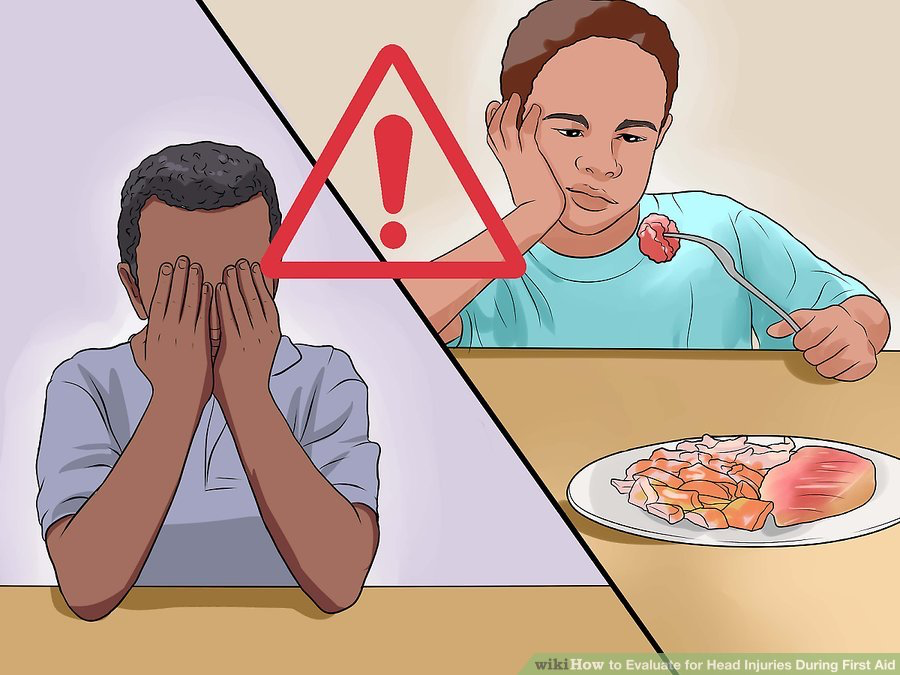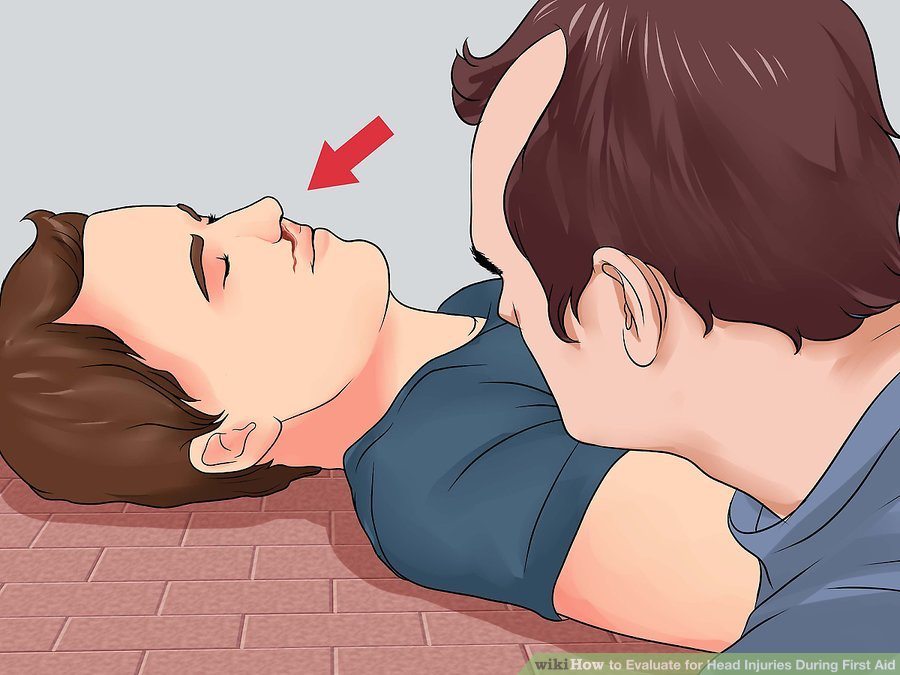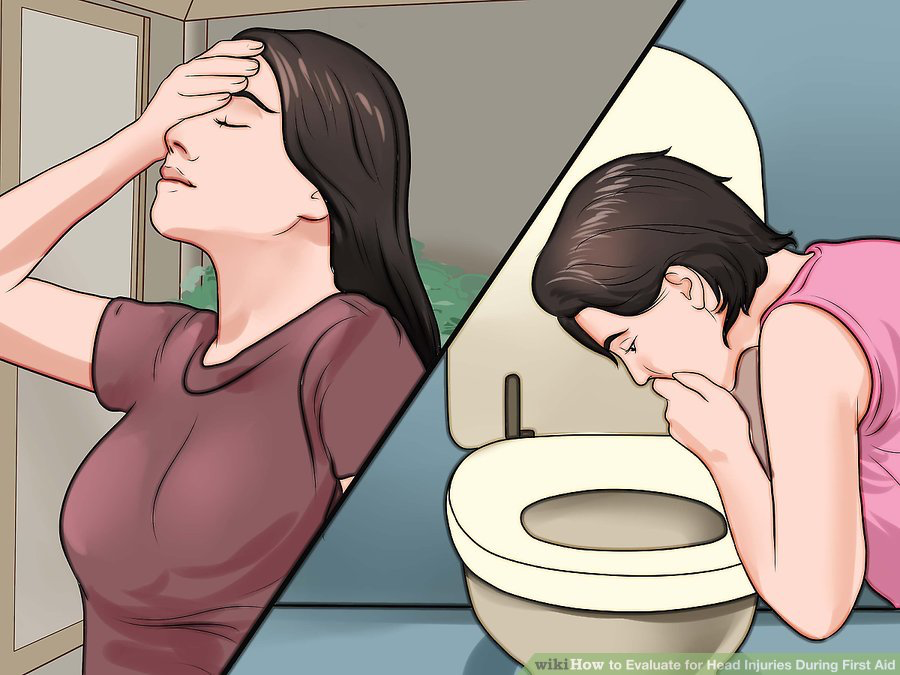Back First Aid Explained
How to Evaluate for Head Injuries During First Aid

We have selected the following expert medical opinion based on its clarity, reliability and accuracy. Credits: Sourced from the website wikiHow. Please refer to your own medical practitioner for a final perspective, assessment or evaluation.
Overview
Head injuries can be caused by various things, even blows to the head that seem to be small. Recognizing the symptoms of these injuries is important, because the condition of someone with this injury can deteriorate without warning. Careful observation and quick action can help identify head injuries. Once you have identified them, you can begin treatment until professional help arrives.
Part 1: Looking for Injuries
1. Make sure the person is conscious
While the person may still be awake, there can be other concerns. You'll want to check him quickly to see if he is alert and responsive.
One good way to check is using the AVPU responsiveness scale:
- Alert: Look to see if he is alert, with eyes open. Does he respond to questions?
- Verbal: Ask simple questions, and see if he is able to answer them. You can also try giving instructions, like, "Sit down here," to test his comprehension.
- Pain: If he doesn't answer, try poking or pinching. Make sure he will respond to some kind of pain, at least moving or opening his eyes. Do not shake, especially if the person appears to be dazed.
- Unresponsive: If he's still not responding, give a gentle shake to see if he offers any response. If not, he is unconscious, and could have a serious head injury.
2. Look for bleeding
If you see bleeding, check to be sure it is a cut or scrape. If you see blood leaking from the nose or ears, that could be the sign of a serious brain injury.
3. Look for skull fractures
Some fractures will be easier to see, especially if the bone has broken through the skin. Take note of where those injuries are so you can tell a medical professional when they arrive.
- Some fractures will be under the skin, and not immediately visible. Bruising around the eyes or behind the ear can be a sign that there is a fracture in the skull's base. If you notice clear fluid coming from the nose or ears, that could be cerebrospinal leakage, indicating a skull fracture.
4. Watch for signs of a spinal injury
Spinal injuries are very serious, and need to be treated by medical professionals. There are several signs to check for and ask about.
- The head is in an unusual position, or the person either can't or won't move her neck or back.
- Numbness, tingling, or paralysis in extremities like the arms or legs. The pulse in the extremities may also be weaker than in the core.
- Weakness and difficulty walking.
- Loss of bladder or bowel control.
- Unconsciousness, or other lack of alertness.
- Complaints of a stiff neck, headache, or neck pain.
- If you suspect a spinal injury, keep the person completely still and laying down until medical help gets there.
5. Check for other symptoms of a serious head injury
If you see any of these symptoms, you should get medical help right away.
Check if the person:
- Becomes very sleepy.
- Begins behaving abnormally.
- Develops a severe headache or stiff neck.
- Has pupils that are different sizes? this may indicate a stroke.
- Becomes unable to move extremities like an arm or leg.
- Loses consciousness. Even a brief loss of consciousness is a sign of serious trouble.
- Vomits more than once.
6. Check for concussion symptoms
Concussions are injuries to the brain, and they may not be seen as easily as cuts and bruises.
There are distinctive symptoms for a concussion, so keep an eye out for them:
- Headache or ringing in the ears.
- Confusion about current surroundings, dizziness, seeing stars, or amnesia about what just happened.
- Nausea and vomiting.
- Slurred speech or delayed answers to questions.
- Evaluate for symptoms again after a few minutes. Some concussion symptoms don't appear right away. This means, if you suspect someone has had a concussion, let him sit for a bit and see if the symptoms develop.
- If certain symptoms have worsened, that is a sign of a more serious medical problem. The person will need medical treatment as soon as possible. Check for head and neck aches that get worse, weakness or numbness in the arms and legs, repeated vomiting, increased confusion or fogginess, slurred speech, and seizures.
7. Look for signs specific to children
There are some additional signs that will appear in children who may have head injuries. Some of these require careful observation, because kids won't be able to verbalize their complaints as easily as adults. Because their skulls and brains are not as fully developed, head injuries can be especially serious and will need immediate attention.
If you think a child may have a serious head injury, look for:
- Persistent crying
- Refusing to eat
- Repeated vomiting
- In infants, look for bulging in the soft spot on the front of the head
- If the child shows any signs of a head injury, do not pick her up

Part 2: Treating Injuries with First Aid
1. Have the person sit down
If someone has a head injury, the first thing he should do is sit quietly and place something cold against the injury. A cold compress or bag of ice is good, though if you are inside, a bag of frozen vegetables can do the trick.
- It is best if the person avoids moving unless you need to get somewhere for better treatment. If it is a fallen child, do not pick him up unless absolutely necessary.
2. Be prepared to start CPR
If the person should suddenly lose consciousness, or stop breathing, you will need to start giving CPR right away. Keep the person on their back, and push down on the chest. If you are trained and comfortable performing CPR, open the airways and give rescue breaths. Repeat as necessary.
- While you wait for the ambulance to arrive, make sure to keep checking breathing, pulse, or anything else that indicates consciousness and ability to respond.
3. Call an AMBULANCE (See "EMERGENCY NUMBERS" above)
If you suspect a serious head injury, or can see signs of a fractured skull or serious bleeding, you will need emergency services to arrive. When you call, be sure to stay as calm as possible while you explain what happened and what kind of help you need. Make sure you give a specific location where the ambulance can reach you. Stay on the line until the dispatcher hangs up so they can offer advice as needed.
4. Treat any spinal injuries
Spinal injuries can cause paralysis or other serious problems. Most treatment will come from medical professionals. There are a few steps you can take to help keep the situation from getting worse until they arrive.
- Keep the person still. If necessary, hold his head or neck in place, or place heavy towels on both sides of the neck for stability.
- Perform modified CPR if the person shows no sign of breathing, known as the jaw-thrust. Do not tilt the head back to open the airway. Instead, kneel behind the person's head and place a hand on either side of his jaw. Holding the head steady, push the mandible up - it should look as if the person has an extreme underbite. Do not do any rescue breathing, just chest compressions.
- If the person starts vomiting, and you do need to roll him over to prevent choking, get a second person to help keep the head, neck, and back aligned. Make sure one of you is at the person's head, while the other should be at their side.
5. Treat any bleeding wounds
If the person has a cut on her head, you will need to stop the bleeding. Make sure to take care you avoid infecting the wound.
- Use water, if you have it, to flush the wound and remove most of the dirt or anything else there.
- Press a dry cloth directly onto the wound to help staunch the bleeding. Secure the dressing using gauze and medical tape if you have it. If you don't, make sure someone holds it in place.
- If you are worried about a skull fracture under the cut, keep the pressure gentle. Try not to press hard so you can avoid compressing the fracture, or pushing bone fragments into the brain.
- Do not wash any head wounds that are deep or bleeding a lot.
6. Provide treatment around skull fractures
While the most serious work of treating a skull fracture will be done by medical professionals, there are several steps you can take to help the injury.
- Without touching anything, take a look at the fractured area to see what you can learn about it. This can be useful information for the ambulance when it arrives. Just make sure that you don't touch the wound with any foreign objects, including your finger.
- Control blood loss by placing a dry cloth directly over the wound. If it soaks through, do not remove the cloth. Instead, add another one and continue to apply pressure as needed.
- Be very careful not to move the person. If you must move her, do your best to keep the head and neck stable. Do not allow the head and neck to twist or turn around.
- If the injured person starts vomiting, carefully turn her whole body to the side so he doesn't choke on the vomit.
_______________________________________________________________________________________________________________________
Are you a healthcare practitioner who enjoys patient education, interaction and communication?
If so, we invite you to criticise, contribute to or help improve our content. We find that many practicing doctors who regularly communicate with patients develop novel and often highly effective ways to convey complex medical information in a simplified, accurate and compassionate manner.
MedSquirrel is a shared knowledge, collective intelligence digital platform developed to share medical expertise between doctors and patients. We support collaboration, as opposed to competition, between all members of the healthcare profession and are striving towards the provision of peer reviewed, accurate and simplified medical information to patients. Please share your unique communication style, experience and insights with a wider audience of patients, as well as your colleagues, by contributing to our digital platform.
Your contribution will be credited to you and your name, practice and field of interest will be made visible to the world. (Contact us via the orange feed-back button on the right).
Disclaimer:
MedSquirrel is a shared knowledge, collective intelligence digital platform developed to share medical knowledge between doctors and patients. If you are a healthcare practitioner, we invite you to criticise, contribute or help improve our content. We support collaboration among all members of the healthcare profession since we strive for the provision of world-class, peer-reviewed, accurate and transparent medical information.
MedSquirrel should not be used for diagnosis, treatment or prescription. Always refer any questions about diagnosis, treatment or prescription to your Doctor.












